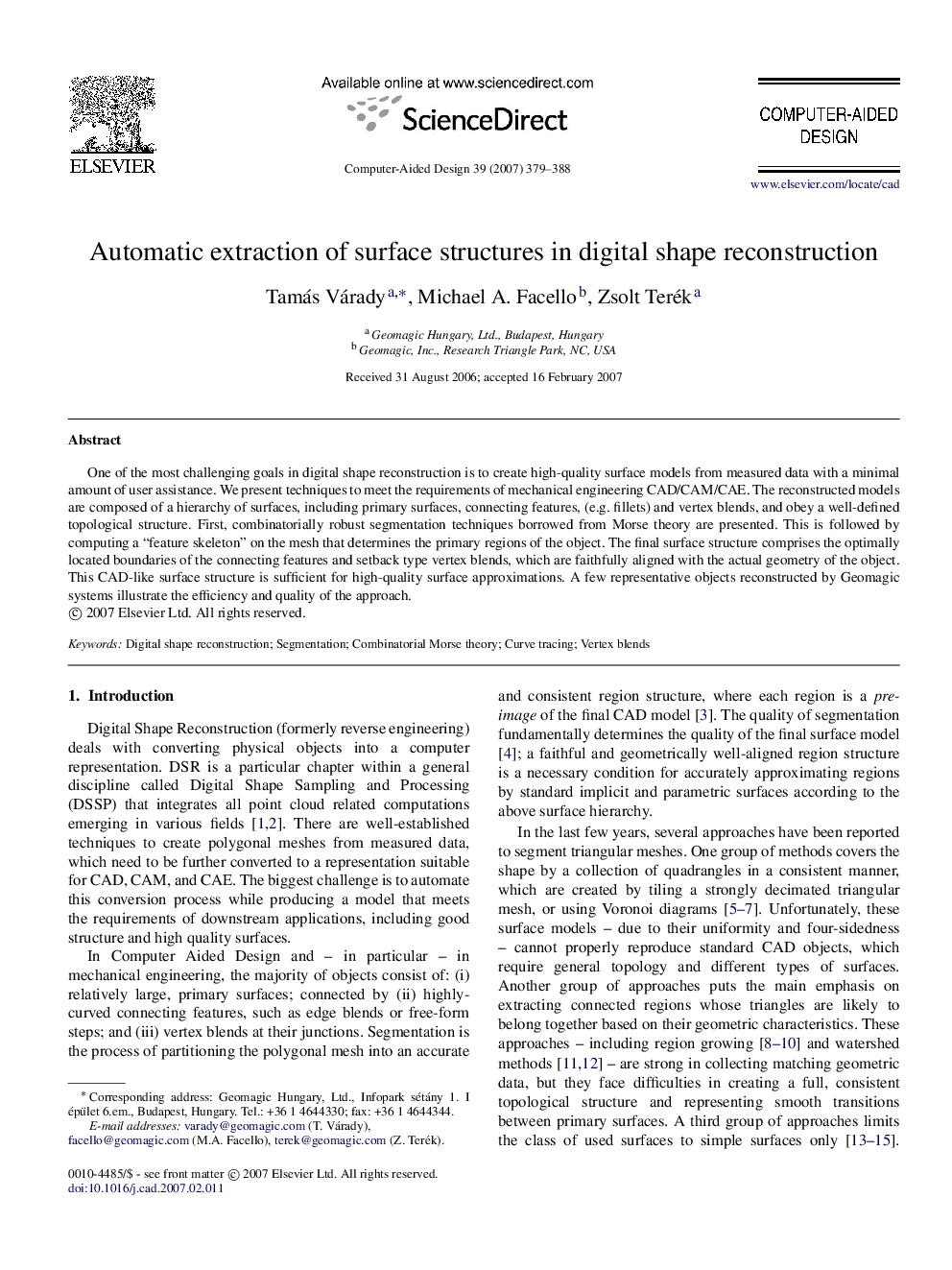| Article ID | Journal | Published Year | Pages | File Type |
|---|---|---|---|---|
| 439809 | Computer-Aided Design | 2007 | 10 Pages |
One of the most challenging goals in digital shape reconstruction is to create high-quality surface models from measured data with a minimal amount of user assistance. We present techniques to meet the requirements of mechanical engineering CAD/CAM/CAE. The reconstructed models are composed of a hierarchy of surfaces, including primary surfaces, connecting features, (e.g. fillets) and vertex blends, and obey a well-defined topological structure. First, combinatorially robust segmentation techniques borrowed from Morse theory are presented. This is followed by computing a “feature skeleton” on the mesh that determines the primary regions of the object. The final surface structure comprises the optimally located boundaries of the connecting features and setback type vertex blends, which are faithfully aligned with the actual geometry of the object. This CAD-like surface structure is sufficient for high-quality surface approximations. A few representative objects reconstructed by Geomagic systems illustrate the efficiency and quality of the approach.
